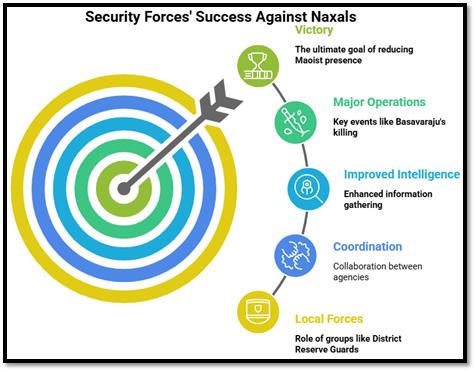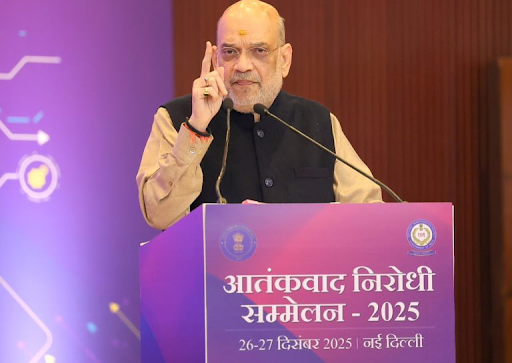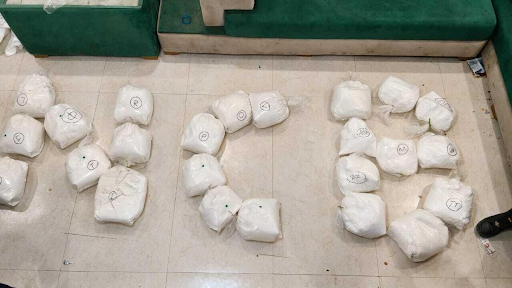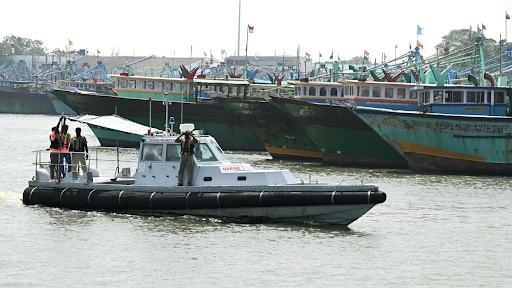



The Modi 3.0 government is intensifying efforts to eliminate Left-Wing Extremism by 2026 through targeted operations and improved coordination, while simultaneously expanding welfare initiatives like Ayushman Bharat for all above 70 and PMAY-G till 2029 to enhance rural infrastructure and elderly healthcare. This dual strategy aims to ensure both national security and inclusive development.

Disclaimer: Copyright infringement not intended.
Union Home Minister Amit Shah announced the goal of eliminating Left-Wing Extremism (LWE) from India by March 31, 2026, signaling a strong governmental intent to eradicate the insurgency.
|
Aspect |
Details |
|
Government Target |
Eliminate Left-Wing Extremism (LWE) by 31 March 2026, as declared by the Union Home Minister. |
|
Progress in Strongholds |
Major gains in Chhattisgarh, Jharkhand, and Odisha, particularly in the Bijapur-Sukma-Dantewada Tri-junctions. |
|
Strategic Measures Used |
- Establishment of Forward Operating Bases (FOBs) - Improved road connectivity- Targeted operations by security forces |
|
Key Elimination |
Basavaraju, CPI(Maoist) General Secretary, killed in May 2025 – first high-rank Maoist leader eliminated in 30 years |
|
Operation Black Forest |
- Launched on 21 April 2025 - Joint operation by CRPF and Chhattisgarh Police - Target: Kurugutta Hills, Chhattisgarh-Telangana border - Duration: 3 weeks |
|
Operation Outcomes |
- 54 Naxalites arrested- 84 surrendered across Chhattisgarh, Telangana, Maharashtra |
|
Key Factors Behind Success |
- Strong political will - Intelligence-driven operations - Improved Centre-State coordination - Local force support (e.g. District Reserve Guard, Chhattisgarh) |
|
Remaining Challenges |
- Maoist ambushes continue in regions like Kolhan (Jharkhand) and Abujhmad (Chhattisgarh) - Casualties among security forces reported |
 Ayushman Bharat Expanded to Cover All Above 70
Ayushman Bharat Expanded to Cover All Above 70|
Aspect |
Details |
|
Scheme Name |
Ayushman Bharat Pradhan Mantri Jan Arogya Yojana (PM-JAY) |
|
Launched In |
2018 |
|
Initial Coverage |
5 lakh annual health cover for 40% of India's poorest families |
|
Notable Achievement |
World’s largest public health insurance scheme |
|
Recent Expansion (Modi 3.0) |
All citizens aged 70 and above covered, regardless of income or social status |
|
Purpose of Expansion |
To ensure universal health coverage for the growing elderly population |
|
Demographic Context |
Elderly population (60+) increased from 103 million in 2011 to 319 million |
|
Percentage of Elderly in Population |
Rose from 8.6% (2011) to 19.5% |
|
Insurance Coverage (Elderly) |
Only 20% currently have any form of insurance (India Ageing Report 2023) |
|
Significance |
Addresses healthcare access inequality among the elderly and rising healthcare costs |
The government has increased Prime Minister Awas Yojana-Gramin (PMAY-G) by 2029, aiming to construct 2 crore additional rural homes. So far, Rs 34,000 crore has been released in states, and 84.45 lakh houses have been approved.
Better Rural Connectivity: Under the Pradhan Mantri Gram Sadak Yojana-IV, the Center has planned to connect 25,000 villages with all-visited roads by 2028-29, which has enhanced the rural infrastructure and reach.
The Modi 3.0 government is actively working to counter the Naxal Rebellion, as well as moving forward with the initiative of significant welfare and infrastructure. The purpose of dual approaches is to ensure security and improve the quality of life for citizens, especially in the weak elderly population and rural areas.
ALSO READ- https://www.iasgyan.in/blogs/indian-missiles-an-overview
Source: Indian Express
|
PRACTICE QUESTION Q. Discuss the significance of the government’s dual approach in addressing internal security challenges such as Left-Wing Extremism (LWE). How do such strategies contribute to inclusive development and long-term peace in affected regions? (250 words) |





© 2026 iasgyan. All right reserved